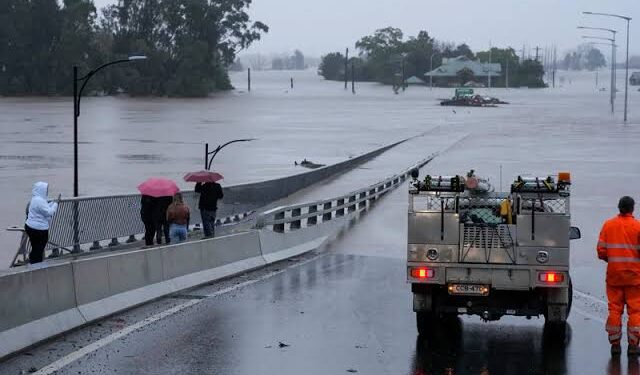Heavy rain caused flash flooding in Sydney, Australia’s largest city, on Saturday, leading to numerous rescues and evacuation orders in several low-lying suburbs. Emergency services have been working around the clock to assist affected residents and manage the rising waters.
Why It Matters
Flooding is a significant natural disaster in Australia, second only to heatwaves in terms of fatalities. Between 1900 and 2022, floods accounted for about 20% of natural disaster deaths in the country. The recent deluge has overwhelmed Sydney’s infrastructure, particularly in flood-prone areas, highlighting the city’s vulnerability to extreme weather events.

Current Situation and Response
In the 24 hours leading up to 5 a.m. local time on Saturday, emergency authorities conducted 13 rescues and received 297 calls for assistance from Sydney residents. Ten evacuation orders were issued for suburbs in the city’s northwest, as the New South Wales State Emergency Service (SES) reported.
What They Are Saying
SES Acting Assistant Commissioner Dallas Burnes emphasized the ongoing danger, noting, “There is still a lot of water moving around,” and urged residents in affected areas to be ready to evacuate. The national weather forecaster has warned of potential major flooding in Sydney’s northwest later in the day.
New South Wales Emergency Services Minister Jihad Dib highlighted the severity of the situation, explaining that the rain had fallen on already swollen catchments, exacerbating the flooding. “Our dams are full, our waterways are full, our grounds are saturated,” Dib said during a televised news conference, noting that roads and bridges had also been impacted.
Bottom Line
Sydney’s latest flooding event underscores the persistent threat of natural disasters in Australia. With emergency services stretched thin and the potential for further flooding, residents in vulnerable areas must remain vigilant and prepared to act quickly. The city’s infrastructure and disaster response systems are being tested once again as they work to mitigate the impacts of these extreme weather conditions.

















